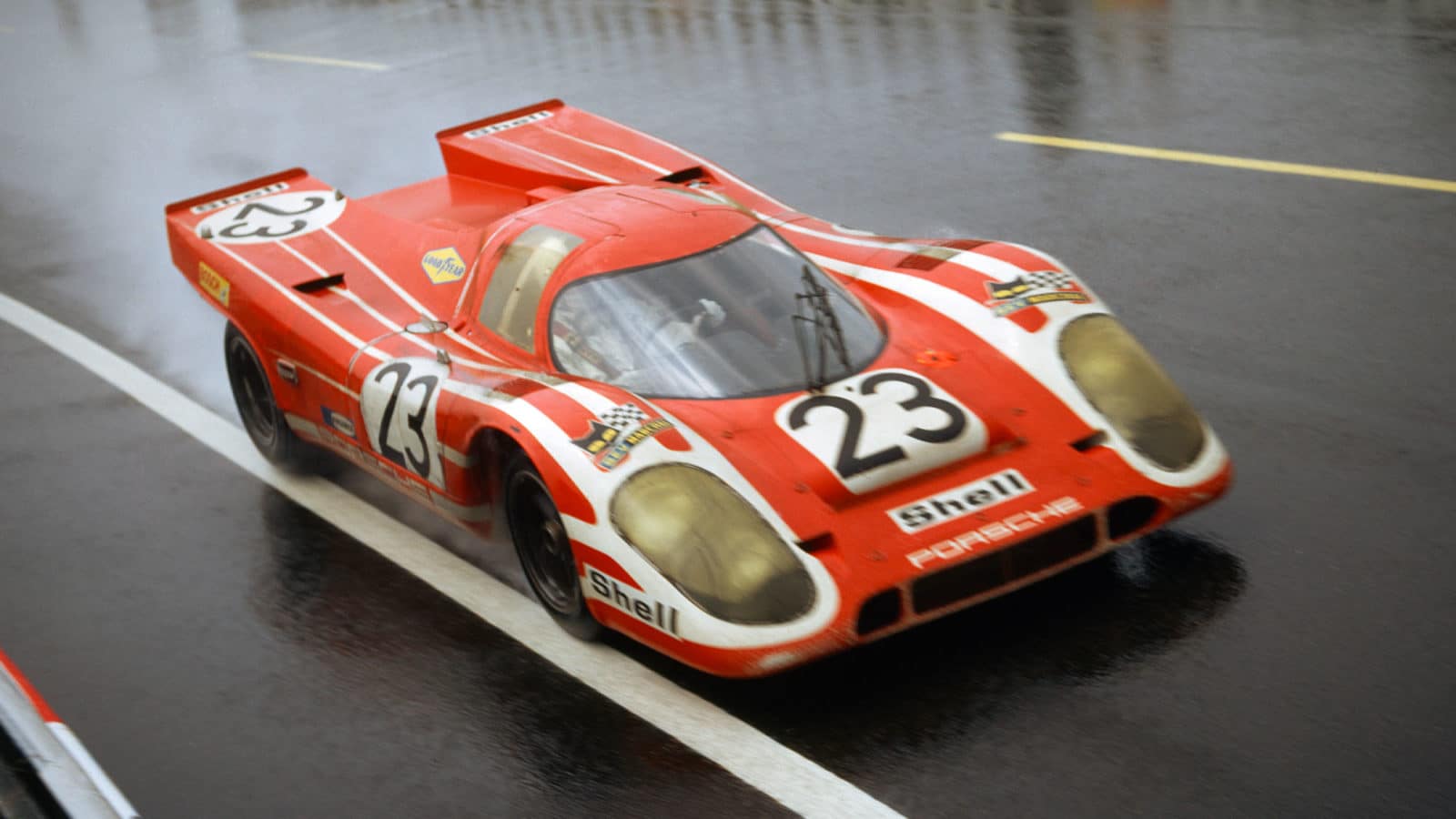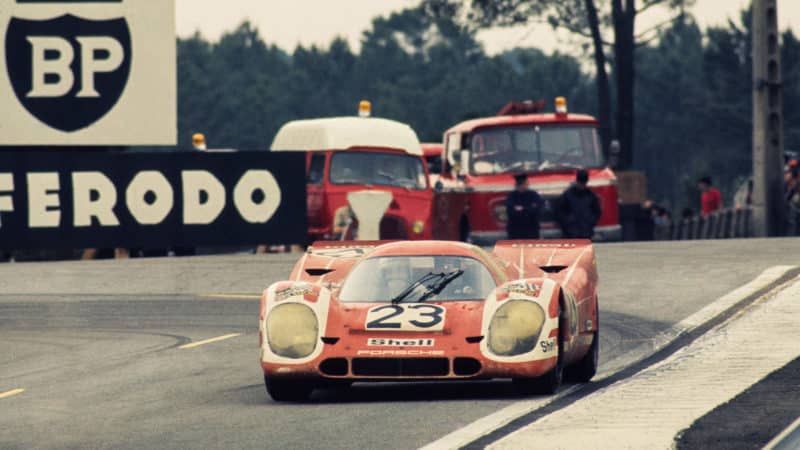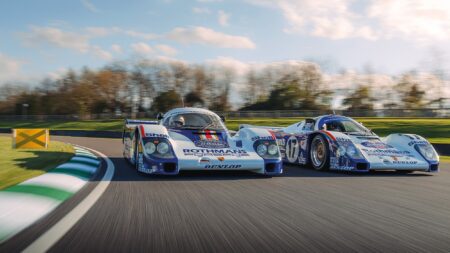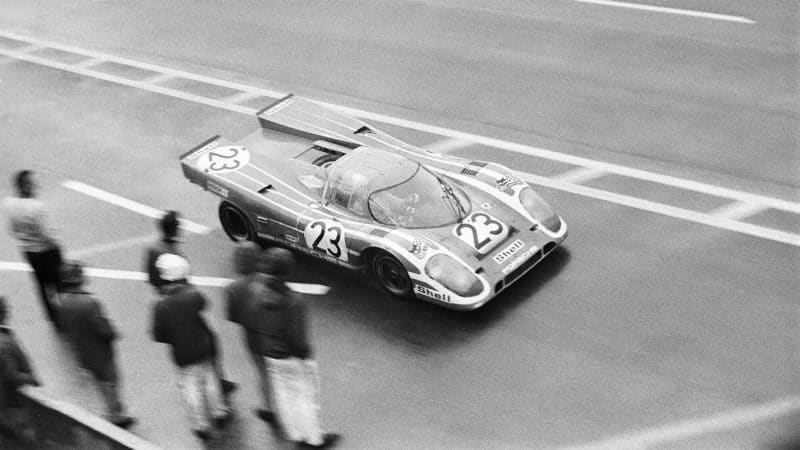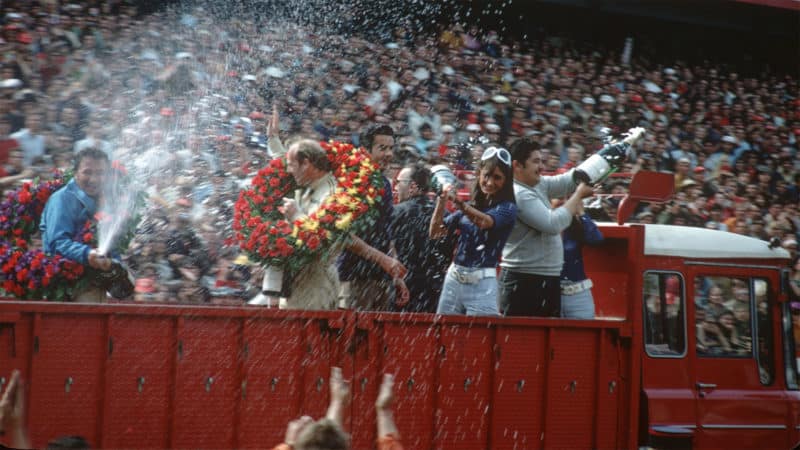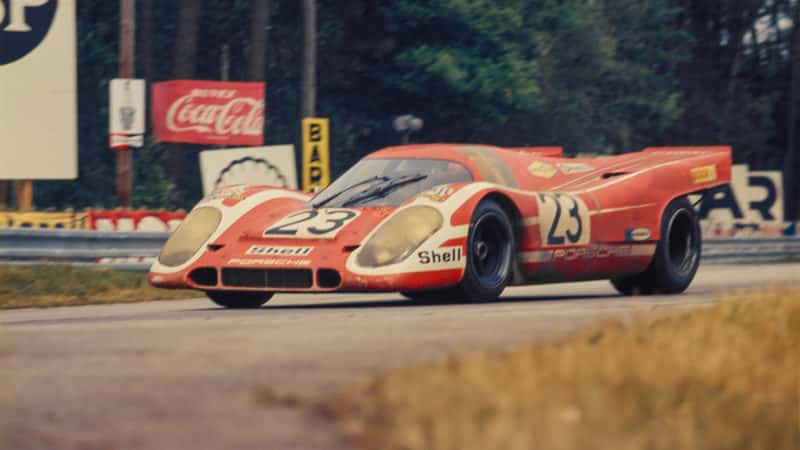Until you see one in the flesh, you’ll not credit how small a 917 is. Sitting in one of Silverstone’s pit garages it seems incredibly compact. The mind’s eye says a 917 is a big bruiser of a racer; reality proves otherwise. Its only vastness is in the engine bay where the flat-12 sprawls across the back of the car pushing the cabin forward towards the front wheels.
The trick when climbing aboard is not to think about your feet too much. There is a removable panel in the nose of the car which reveals what stands between human flesh and whatever it might hit in a head-on accident; there’s a tiny steel tube, 1.2mm of bodywork and the pedals. That’s it. Those who found themselves in an out-of-control 917 went to extraordinary lengths to ensure that, one way or another, it did not hit nose first.
It’s a reasonably easy car to jump into, though care must be taken where to stand and rest your hands. Most of the paper-thin bodywork, for instance, is off limits and even the door must always he held open for you lest the merest puff of winds slams it shut or rips it open.
The cabin, to be frank, is not attractive but at least it all makes reasonable sense. You sit very low and so reclined your knees feel almost as high as your head. The wheel is a surprising stretch away but at least provides a clear view between its three simple spokes to the three simple dials in the instrument binnacle. There’s a rev-counter flanked by readouts for oil pressure and temperature and, unless you count the ammeter, located almost out of sight in front of the passenger’s space, that’s it.
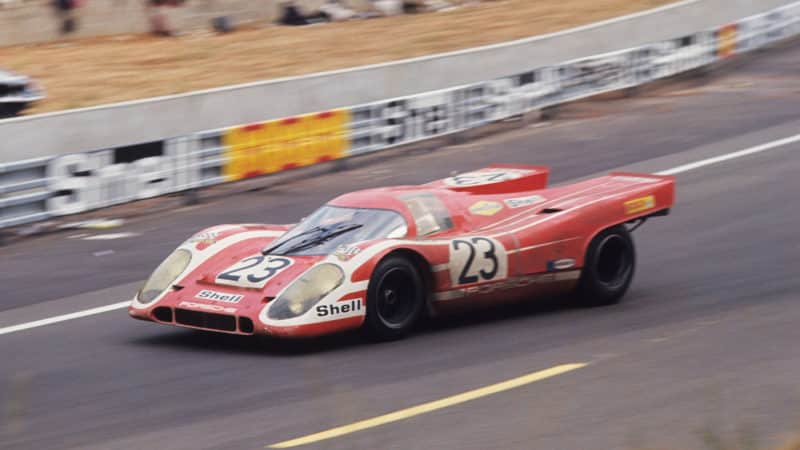
One of the ultimate competition cars, 917 is challenging in more ways than one
DPPI
It’s hard to remember that the rules required these cars to be two-seaters and harder still to imagine what shape an adult would have to be to squeeze in next to the driver. Nevertheless, regulations required those cars in the ‘production’ category of racing which the 917 had so sneakily infiltrated to have at least a passing resemblance to road cars and the evidence is all around the car, from the handbrake to the tiny luggage stores under the rear wing.
So how do you drive this legendary beast, this car voted by a panel of 50 of the sport’s greatest names as ‘The Greatest Racing Car of All Time’? You turn the key and go. That’s all; a Porsche 917 is as easy to start as a Ford Fiesta. This is instructive and suggests again that pragmatism plays as large a part in the secret of this car’s success as pure power. As my day with the car elapsed, I learned more about this hidden talent. How many retirements were saved by its all-syncromesh gearbox and how many mistakes were avoided by a driver kept alert by the jet of cold air the ventilation system directs onto your face? Minimal instrumentation reduces the risk of distraction at over 200mph too…
Even so, all that’s for later for, right now, the 917 is still sitting in the pits, bellowing its way to an acceptable working temperature. It takes an age of idling and blipping of the throttle before the oil temperature needle shows the smallest sign of life. Outside the air temperature hovers just a fraction above freezing and we decide to run the Porsche on wet weather tyres, their super-soft compound offering our only chance of generating some warmth on a day such as this. The slicks the 917 usually uses stay under cover.
